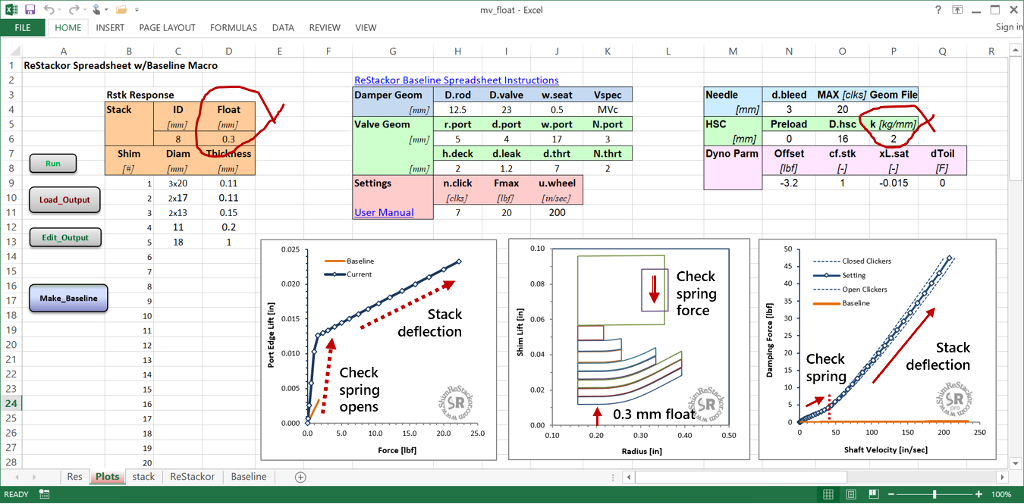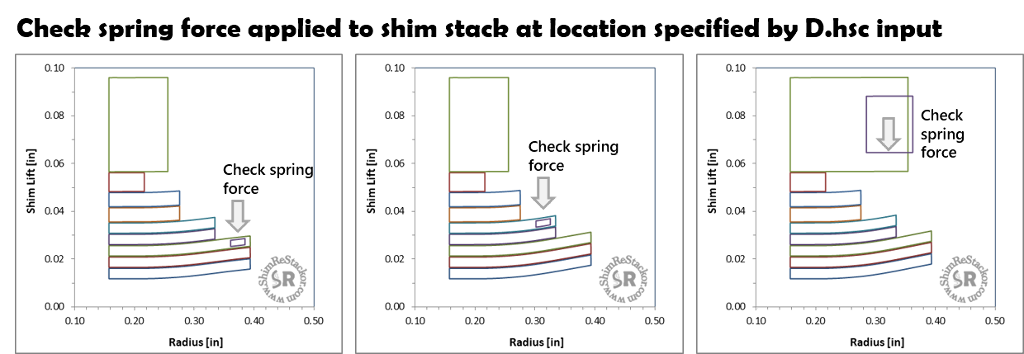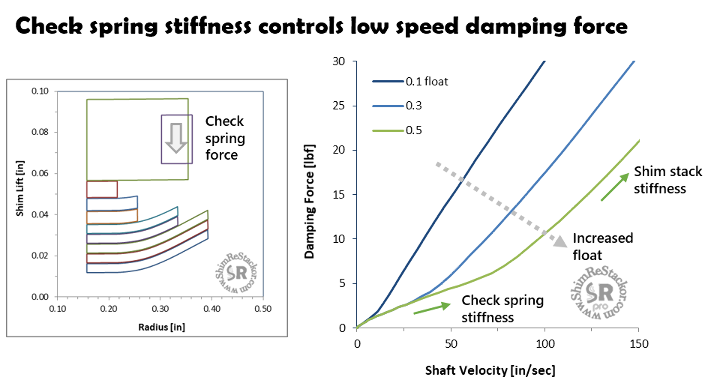Shim stack float, entered in cell D6, allows the shim stack to physically lift off the valve face. Float makes the shim stack behave like a spring loaded check valve.
The check spring stiffness and preload entered in cells N6 through P6 control the float cracking pressure. When the shim stack lift reaches the float limit, the shim stack hits a hard stop. Damping force beyond that point is controlled by the shim stack deflection stiffness.

Float check spring
Shim ReStackor draws a small box on the shim diameter where the check spring force is applied to the shim stack. The check spring force can be applied at the clamp, the outside edge of the face shim,
or any arbitrary diameter on the shim stack taper. The typical configuration for a floated fork mid-valve applies the check spring force on the stack clamp washer.

Low speed damping
Low speed damping is controlled by the float check spring stiffness and preload. Spring preload controls the cracking pressure and shock shaft velocity where float cracks open. Below that speed, damping is controlled by the bleed circuits.
The stiffness of the check spring controls the rate of float opening and damping force through the low speed range. At the end of float travel the shim stack hits a hard stop. Deflection of the shim stack controls damping beyond that point through the high speed range.

Shim stack float tuning
The combination of float, check spring stiffness, check spring preload and clicker bleed gives detailed control of damping force through the low speed range.
Shim ReStackor models all of those parameters making it easy to "see" the effect of each parameter, optimize the influance and control damping force across the entire range of suspension velocities.


